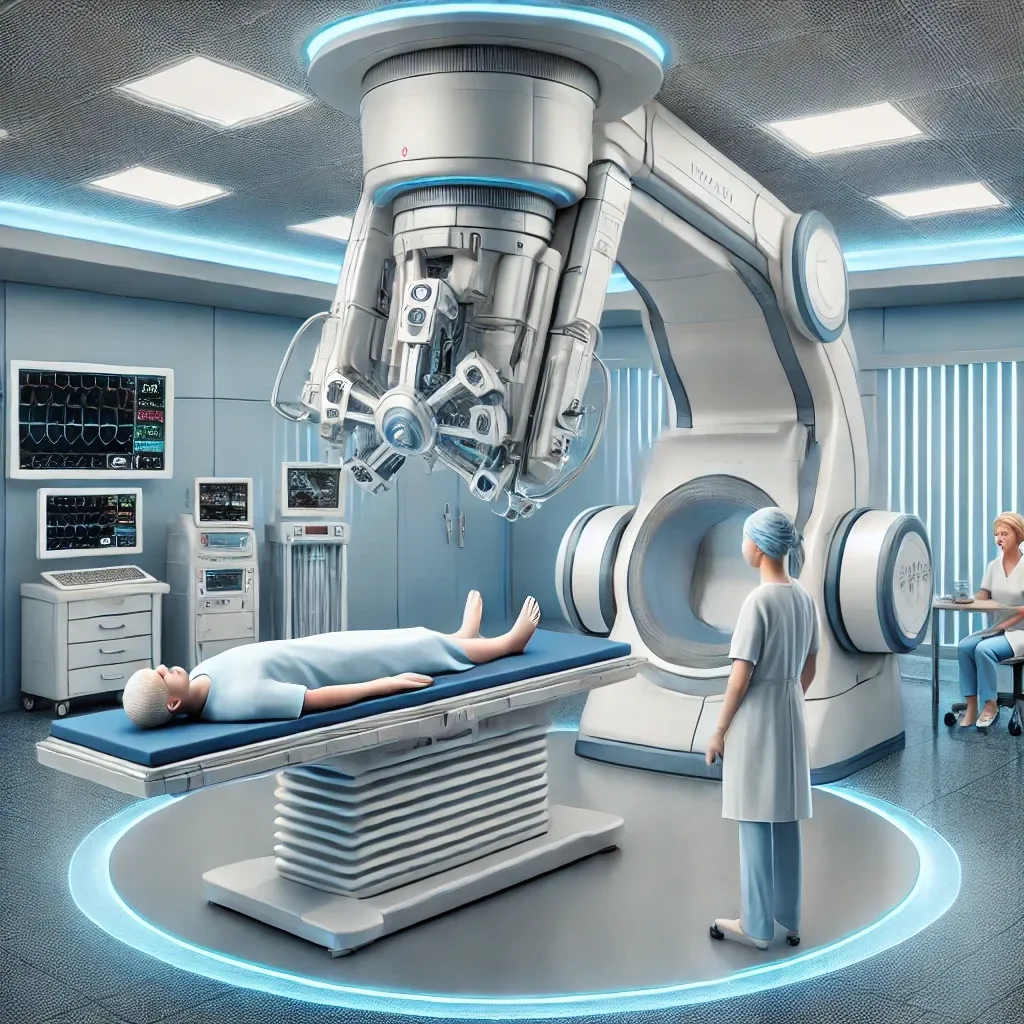Cyber knife

Introduction to CyberKnife
The CyberKnife is an advanced, non-invasive radiation therapy system designed to treat tumors and other medical conditions in various parts of the body, including the brain, spine, lungs, liver, pancreas, and prostate. Unlike traditional surgery, the CyberKnife does not require any incisions; instead, it uses highly focused beams of radiation delivered by a robotic arm to precisely target abnormal tissues.
How Does the CyberKnife Work?
The CyberKnife system combines robotics with advanced imaging to deliver high doses of radiation with sub-millimeter accuracy. Here’s how it works:
- Robotic Precision: The CyberKnife uses a flexible robotic arm that can move around the patient to deliver radiation from virtually any angle. This flexibility allows the system to reach tumors in hard-to-access areas and adjust its position in real-time, accounting for patient movement such as breathing.
- Image-Guided Radiation Delivery: The system is equipped with imaging technology that provides real-time feedback. This allows for continuous monitoring and adjustment of the radiation beams, ensuring they remain focused on the target while minimizing exposure to surrounding healthy tissue.
- No Need for Invasive Head Frames: Unlike some other stereotactic radiosurgery systems, the CyberKnife does not require a rigid head frame to hold the patient in place, making the procedure more comfortable.
The CyberKnife Treatment Process
- Initial Consultation and Planning: The process begins with a consultation with a radiation oncologist who evaluates the patient’s condition. Advanced imaging tests like CT, MRI, or PET scans are used to create a detailed map of the tumor and surrounding structures.
- Treatment Planning: A specialized team, including radiation oncologists and medical physicists, uses the imaging data to develop a personalized treatment plan. The plan determines the optimal radiation dose and the precise angles from which the radiation beams will be delivered.
- CyberKnife Treatment Sessions: During the session, the patient lies on a treatment table while the robotic arm moves around them, delivering radiation to the target area. The treatment is completely painless and typically lasts between 30 minutes to two hours, depending on the complexity of the case.
- Follow-Up Care: Most patients can return to their normal activities immediately after the treatment. Regular follow-up appointments are scheduled to monitor the treatment's success and manage any side effects.
Benefits of CyberKnife Treatment
- Non-Invasive and Painless: No cuts, incisions, or anesthesia are required, reducing the risk of infection and complications.
- High Precision: The CyberKnife can target tumors with sub-millimeter accuracy, minimizing damage to healthy tissues.
- Minimal Recovery Time: Patients can often resume their normal routines shortly after treatment.
- Adaptable to Patient Movement: The system compensates for natural movements such as breathing, allowing for more precise treatment of tumors in the chest and abdomen.
Conditions Treated by CyberKnife
The CyberKnife system is versatile and can treat a wide range of conditions, including:
- Primary and Metastatic Brain Tumors
- Spinal Tumors
- Lung Cancer
- Liver Cancer
- Prostate Cancer
- Pancreatic Cancer
Potential Side Effects and Risks
While CyberKnife treatment is generally well-tolerated, some patients may experience side effects, such as:
- Fatigue: A common, temporary side effect.
- Mild Skin Reactions: Such as redness or irritation in the treated area.
- Swelling or Inflammation: Depending on the location of the treatment.
Conclusion
The CyberKnife represents a cutting-edge technology in cancer treatment, offering a highly precise, non-invasive option for patients with tumors in various parts of the body. Its advanced robotic system and imaging capabilities provide new possibilities for treating cancers that were once considered inoperable or difficult to reach.



